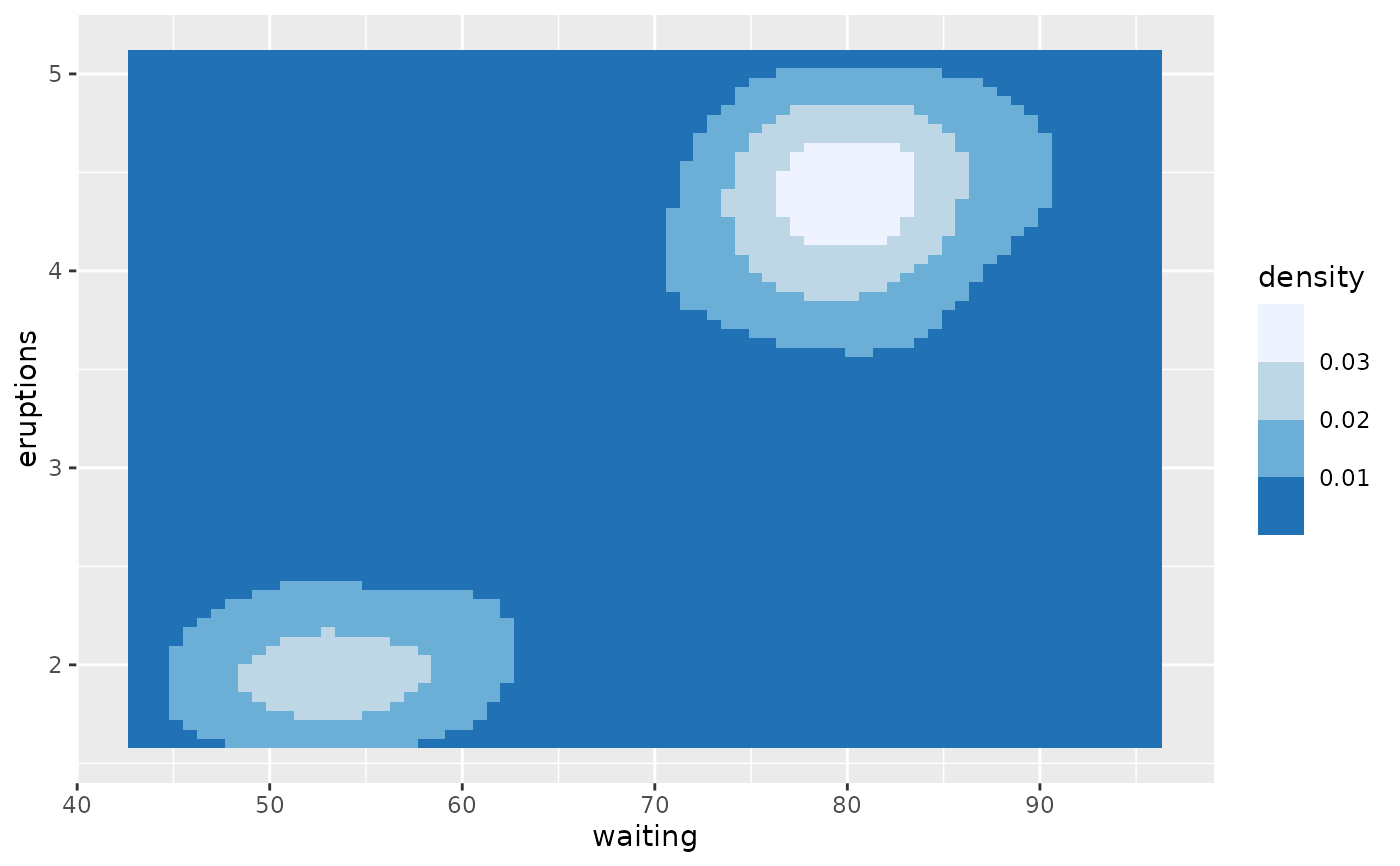
Sequential, diverging and qualitative colour scales from ColorBrewer
Source:R/scale-brewer.R, R/zxx.R
scale_brewer.RdThe brewer scales provide sequential, diverging and qualitative
colour schemes from ColorBrewer. These are particularly well suited to
display discrete values on a map. See https://colorbrewer2.org for
more information.
Usage
scale_colour_brewer(
name = waiver(),
...,
type = "seq",
palette = 1,
direction = 1,
aesthetics = "colour"
)
scale_fill_brewer(
name = waiver(),
...,
type = "seq",
palette = 1,
direction = 1,
aesthetics = "fill"
)
scale_colour_distiller(
name = waiver(),
...,
type = "seq",
palette = 1,
direction = -1,
values = NULL,
space = "Lab",
na.value = "grey50",
guide = "colourbar",
aesthetics = "colour"
)
scale_fill_distiller(
name = waiver(),
...,
type = "seq",
palette = 1,
direction = -1,
values = NULL,
space = "Lab",
na.value = "grey50",
guide = "colourbar",
aesthetics = "fill"
)
scale_colour_fermenter(
name = waiver(),
...,
type = "seq",
palette = 1,
direction = -1,
na.value = "grey50",
guide = "coloursteps",
aesthetics = "colour"
)
scale_fill_fermenter(
name = waiver(),
...,
type = "seq",
palette = 1,
direction = -1,
na.value = "grey50",
guide = "coloursteps",
aesthetics = "fill"
)Arguments
- name
The name of the scale. Used as the axis or legend title. If
waiver(), the default, the name of the scale is taken from the first mapping used for that aesthetic. IfNULL, the legend title will be omitted.- ...
Other arguments passed on to
discrete_scale(),continuous_scale(), orbinned_scale(), forbrewer,distiller, andfermentervariants respectively, to control name, limits, breaks, labels and so forth.- type
One of "seq" (sequential), "div" (diverging) or "qual" (qualitative)
- palette
If a string, will use that named palette. If a number, will index into the list of palettes of appropriate
type. The list of available palettes can found in the Palettes section.- direction
Sets the order of colours in the scale. If 1, the default, colours are as output by
RColorBrewer::brewer.pal(). If -1, the order of colours is reversed.- aesthetics
Character string or vector of character strings listing the name(s) of the aesthetic(s) that this scale works with. This can be useful, for example, to apply colour settings to the
colourandfillaesthetics at the same time, viaaesthetics = c("colour", "fill").- values
if colours should not be evenly positioned along the gradient this vector gives the position (between 0 and 1) for each colour in the
coloursvector. Seerescale()for a convenience function to map an arbitrary range to between 0 and 1.- space
colour space in which to calculate gradient. Must be "Lab" - other values are deprecated.
- na.value
Colour to use for missing values
- guide
Type of legend. Use
"colourbar"for continuous colour bar, or"legend"for discrete colour legend.
Details
The brewer scales were carefully designed and tested on discrete data.
They were not designed to be extended to continuous data, but results often
look good. Your mileage may vary.
Note
The distiller scales extend brewer scales by smoothly
interpolating 7 colours from any palette to a continuous scale.
The distiller scales have a default direction = -1. To reverse, use direction = 1.
The fermenter scales provide binned versions of the brewer scales.
Palettes
The following palettes are available for use with these scales:
- Diverging
BrBG, PiYG, PRGn, PuOr, RdBu, RdGy, RdYlBu, RdYlGn, Spectral
- Qualitative
Accent, Dark2, Paired, Pastel1, Pastel2, Set1, Set2, Set3
- Sequential
Blues, BuGn, BuPu, GnBu, Greens, Greys, Oranges, OrRd, PuBu, PuBuGn, PuRd, Purples, RdPu, Reds, YlGn, YlGnBu, YlOrBr, YlOrRd
Modify the palette through the palette argument.
See also
The documentation on colour aesthetics.
The brewer scales section of the online ggplot2 book.
Other colour scales:
scale_alpha(),
scale_colour_continuous(),
scale_colour_gradient(),
scale_colour_grey(),
scale_colour_hue(),
scale_colour_identity(),
scale_colour_manual(),
scale_colour_steps(),
scale_colour_viridis_d()
Examples
set.seed(596)
dsamp <- diamonds[sample(nrow(diamonds), 1000), ]
(d <- ggplot(dsamp, aes(carat, price)) +
geom_point(aes(colour = clarity)))
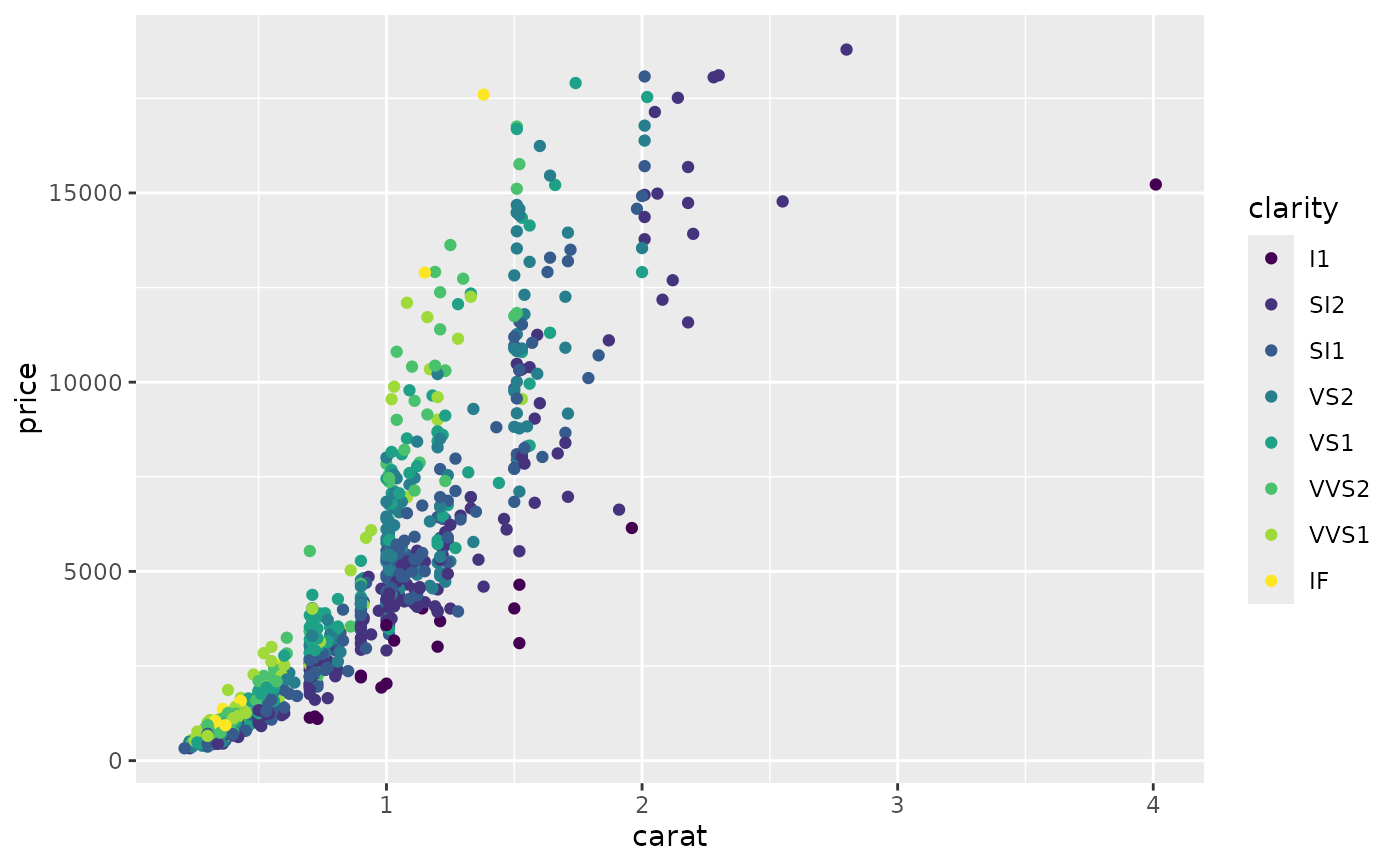 d + scale_colour_brewer()
d + scale_colour_brewer()
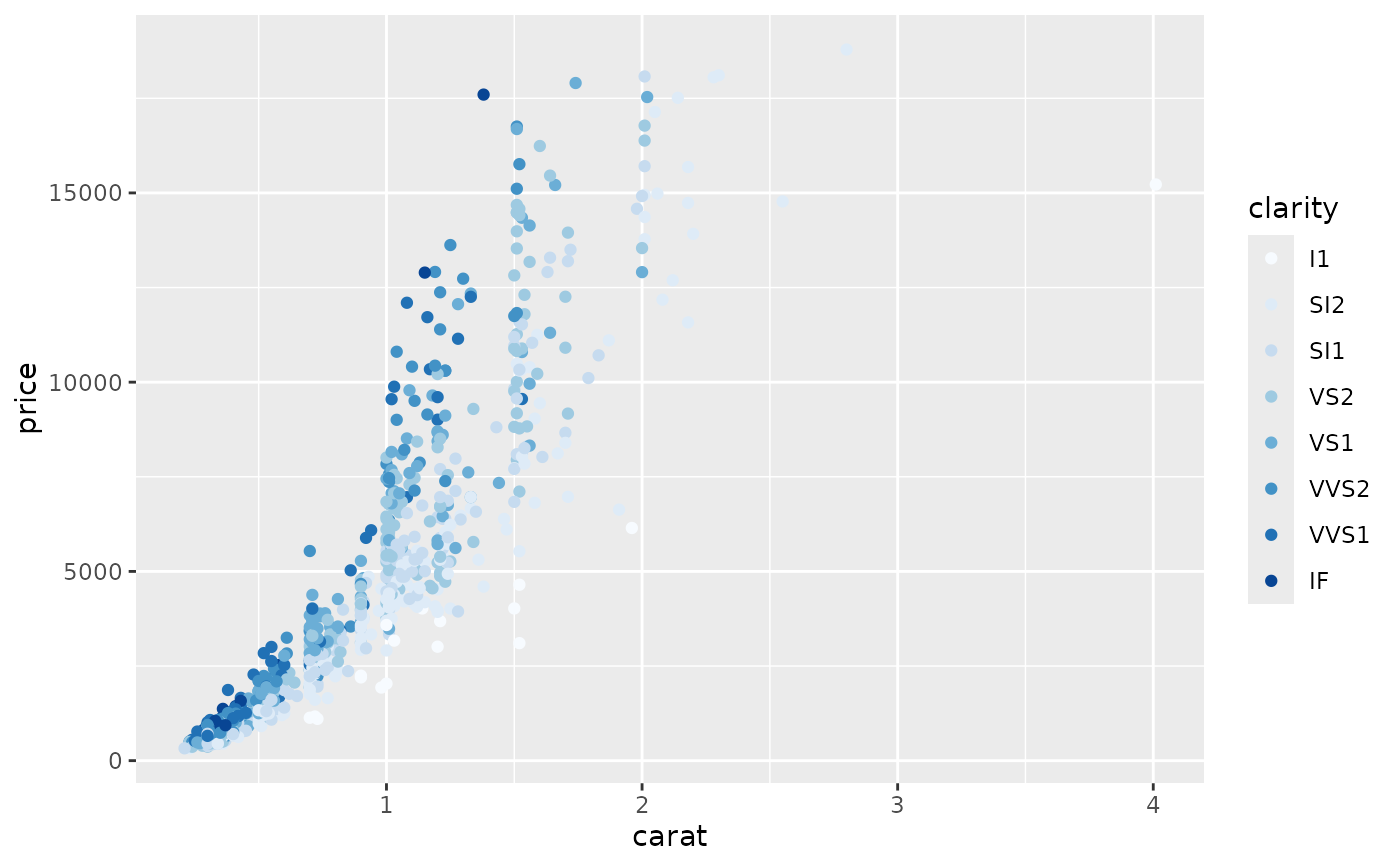 # Change scale label
d + scale_colour_brewer("Diamond\nclarity")
# Change scale label
d + scale_colour_brewer("Diamond\nclarity")
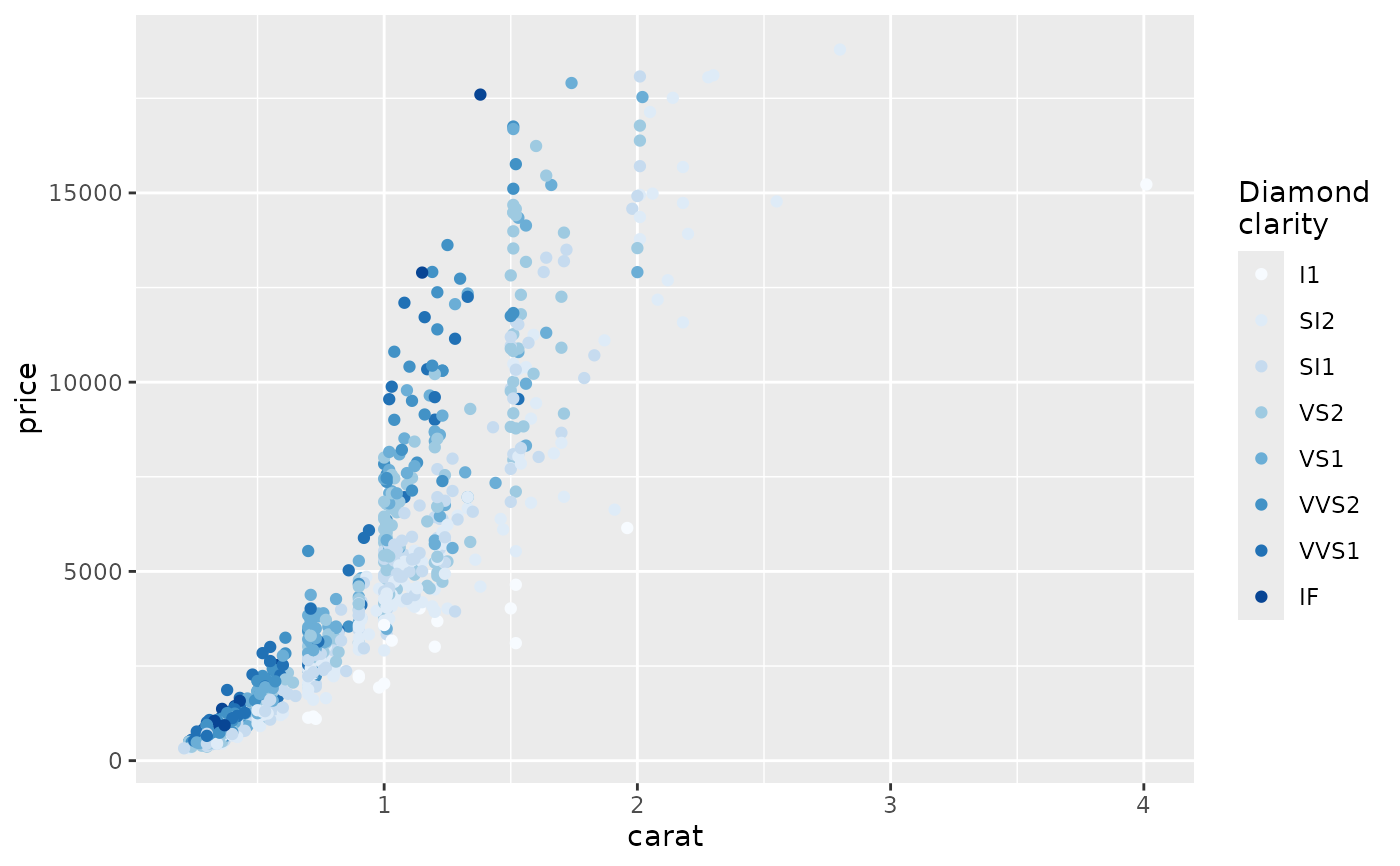 # Select brewer palette to use, see ?scales::pal_brewer for more details
d + scale_colour_brewer(palette = "Greens")
# Select brewer palette to use, see ?scales::pal_brewer for more details
d + scale_colour_brewer(palette = "Greens")
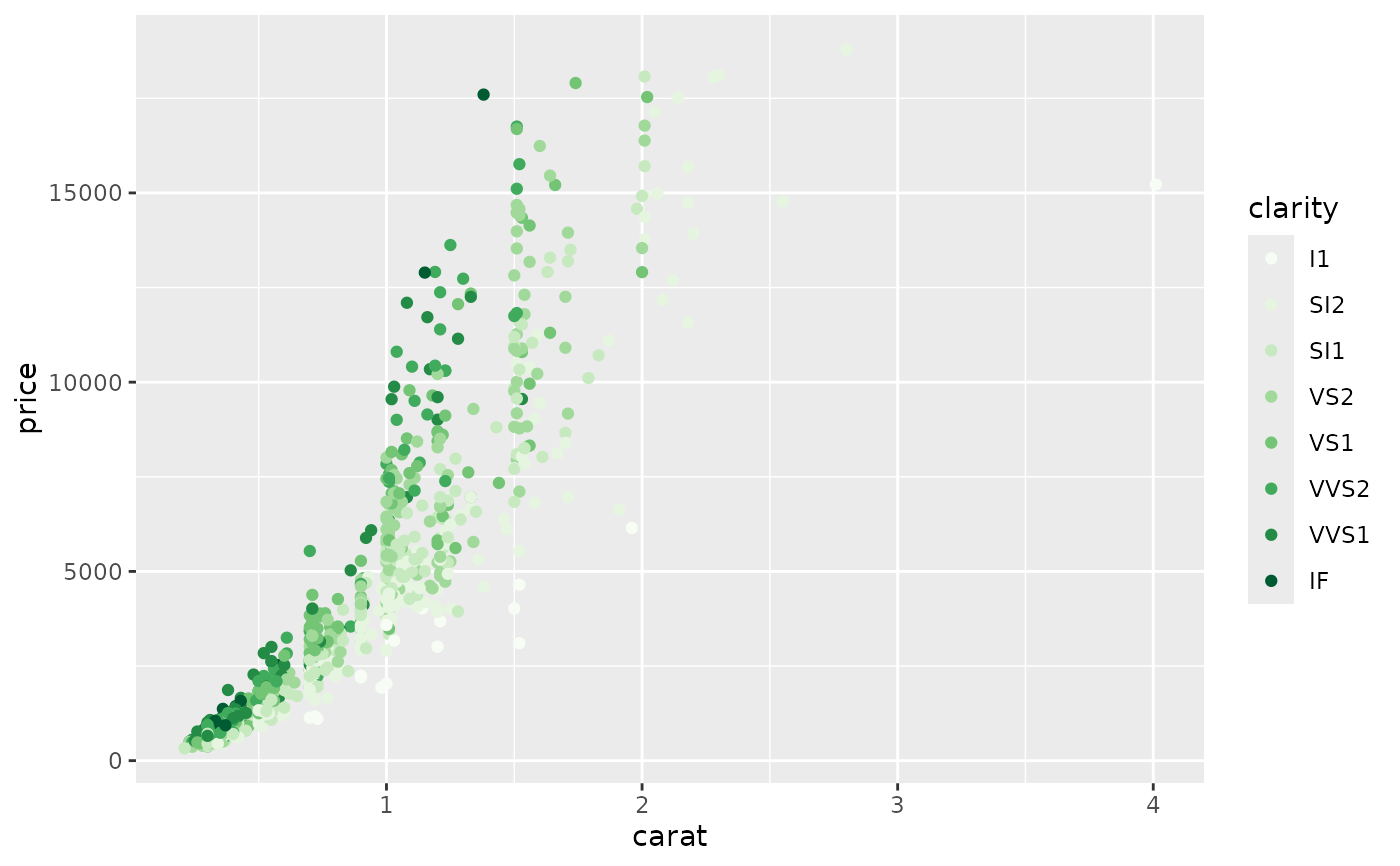 d + scale_colour_brewer(palette = "Set1")
d + scale_colour_brewer(palette = "Set1")
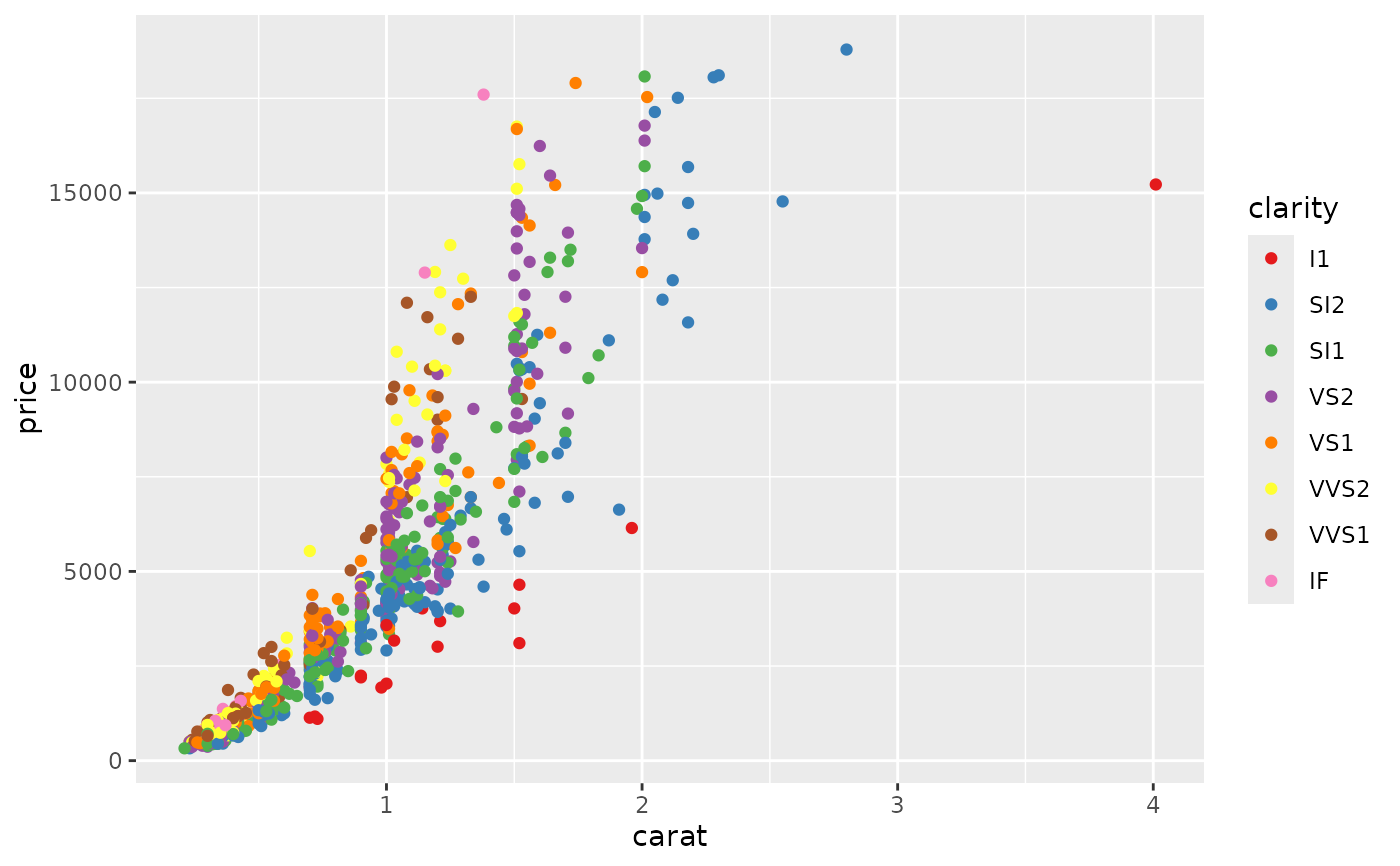 # \donttest{
# scale_fill_brewer works just the same as
# scale_colour_brewer but for fill colours
p <- ggplot(diamonds, aes(x = price, fill = cut)) +
geom_histogram(position = "dodge", binwidth = 1000)
p + scale_fill_brewer()
# \donttest{
# scale_fill_brewer works just the same as
# scale_colour_brewer but for fill colours
p <- ggplot(diamonds, aes(x = price, fill = cut)) +
geom_histogram(position = "dodge", binwidth = 1000)
p + scale_fill_brewer()
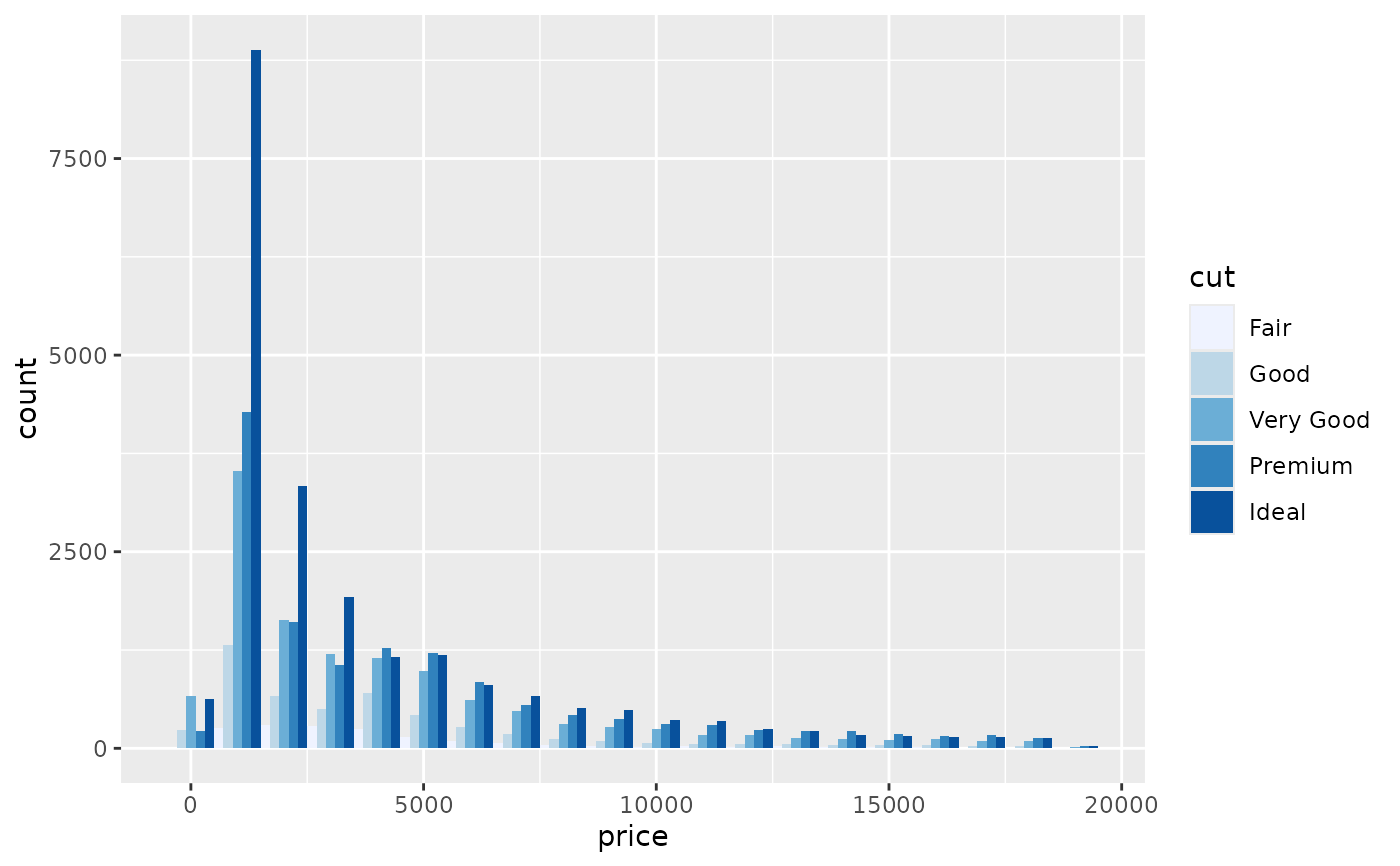 # the order of colour can be reversed
p + scale_fill_brewer(direction = -1)
# the order of colour can be reversed
p + scale_fill_brewer(direction = -1)
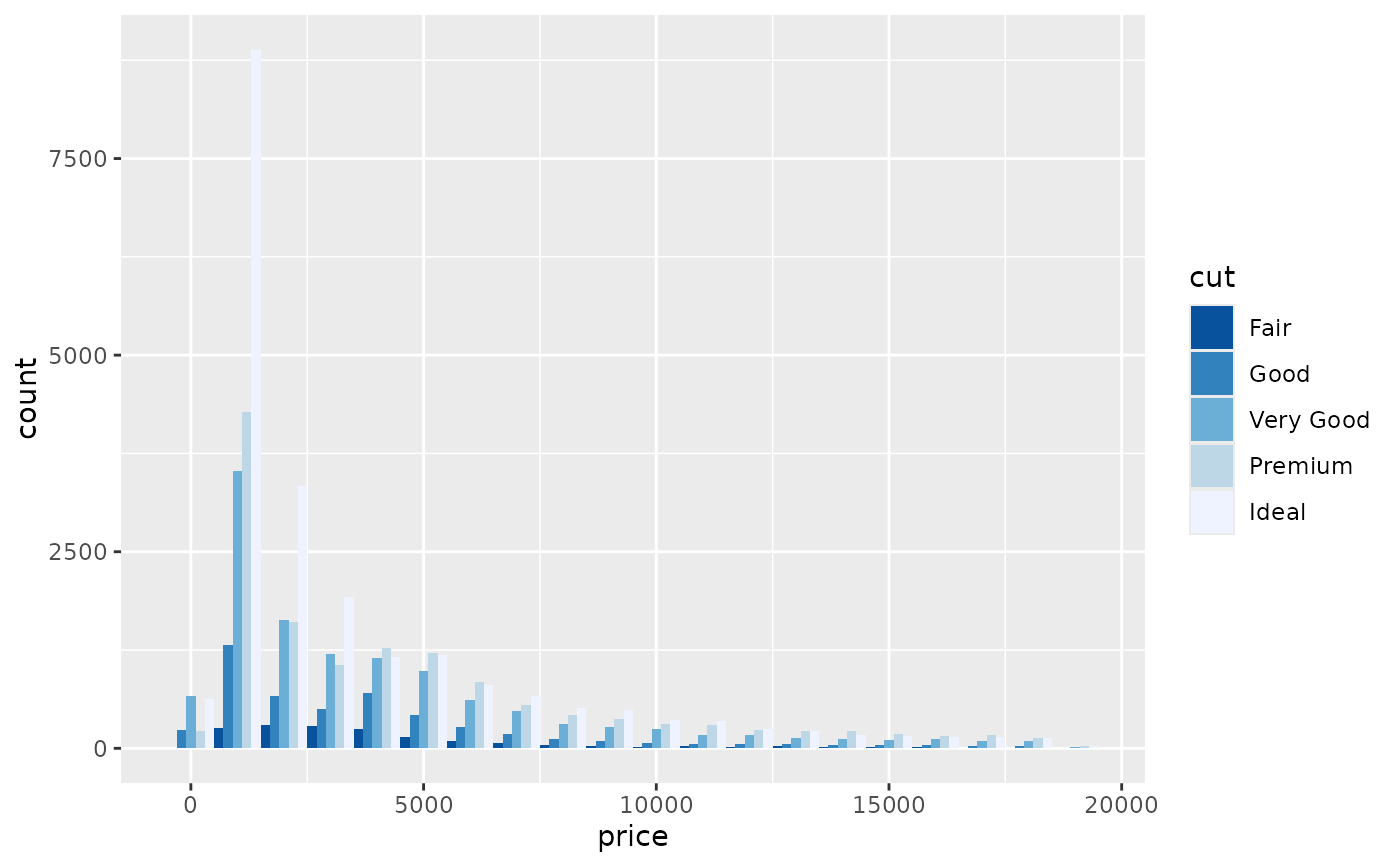 # the brewer scales look better on a darker background
p +
scale_fill_brewer(direction = -1) +
theme_dark()
# the brewer scales look better on a darker background
p +
scale_fill_brewer(direction = -1) +
theme_dark()
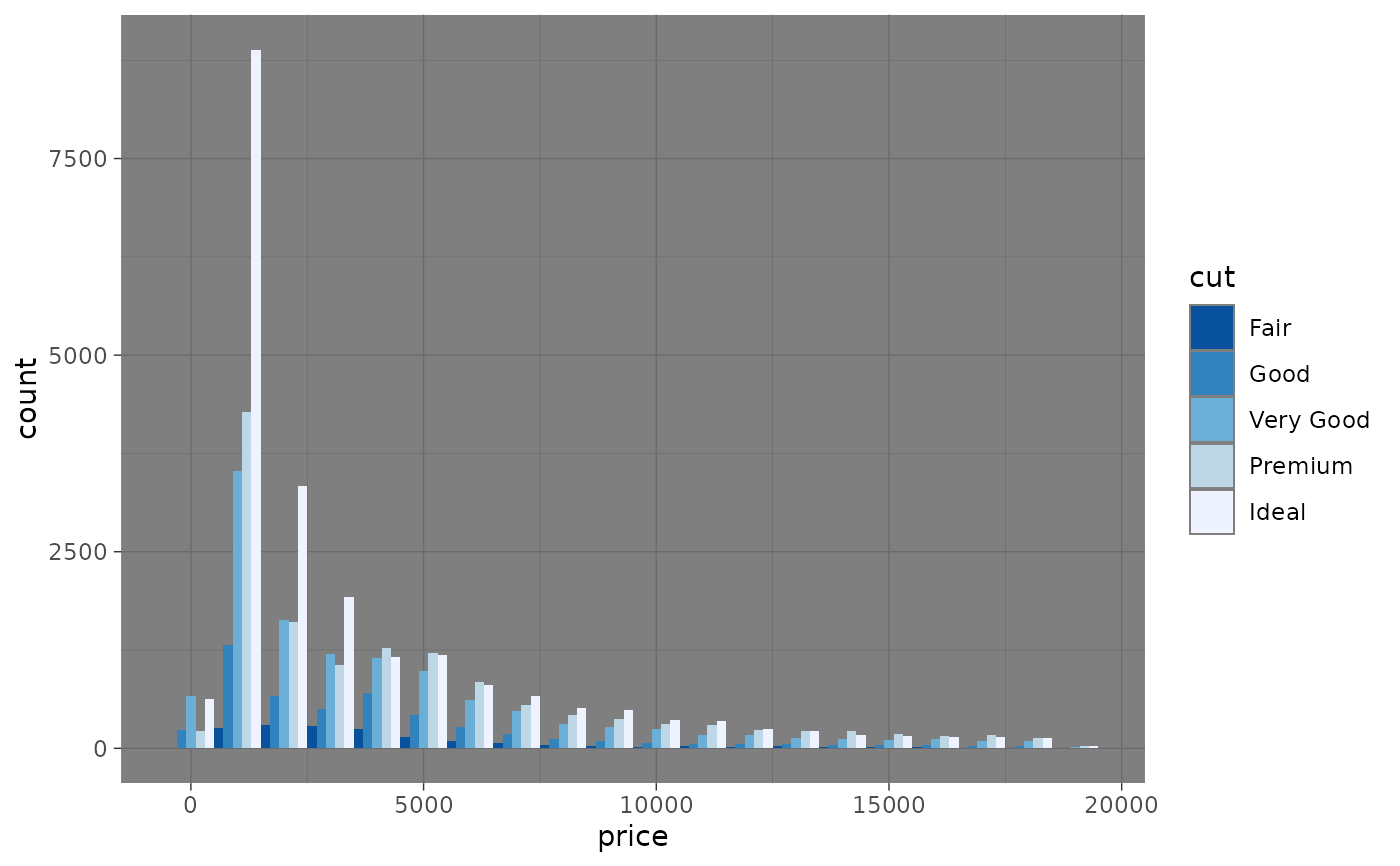 # }
# Use distiller variant with continuous data
v <- ggplot(faithfuld) +
geom_tile(aes(waiting, eruptions, fill = density))
v
# }
# Use distiller variant with continuous data
v <- ggplot(faithfuld) +
geom_tile(aes(waiting, eruptions, fill = density))
v
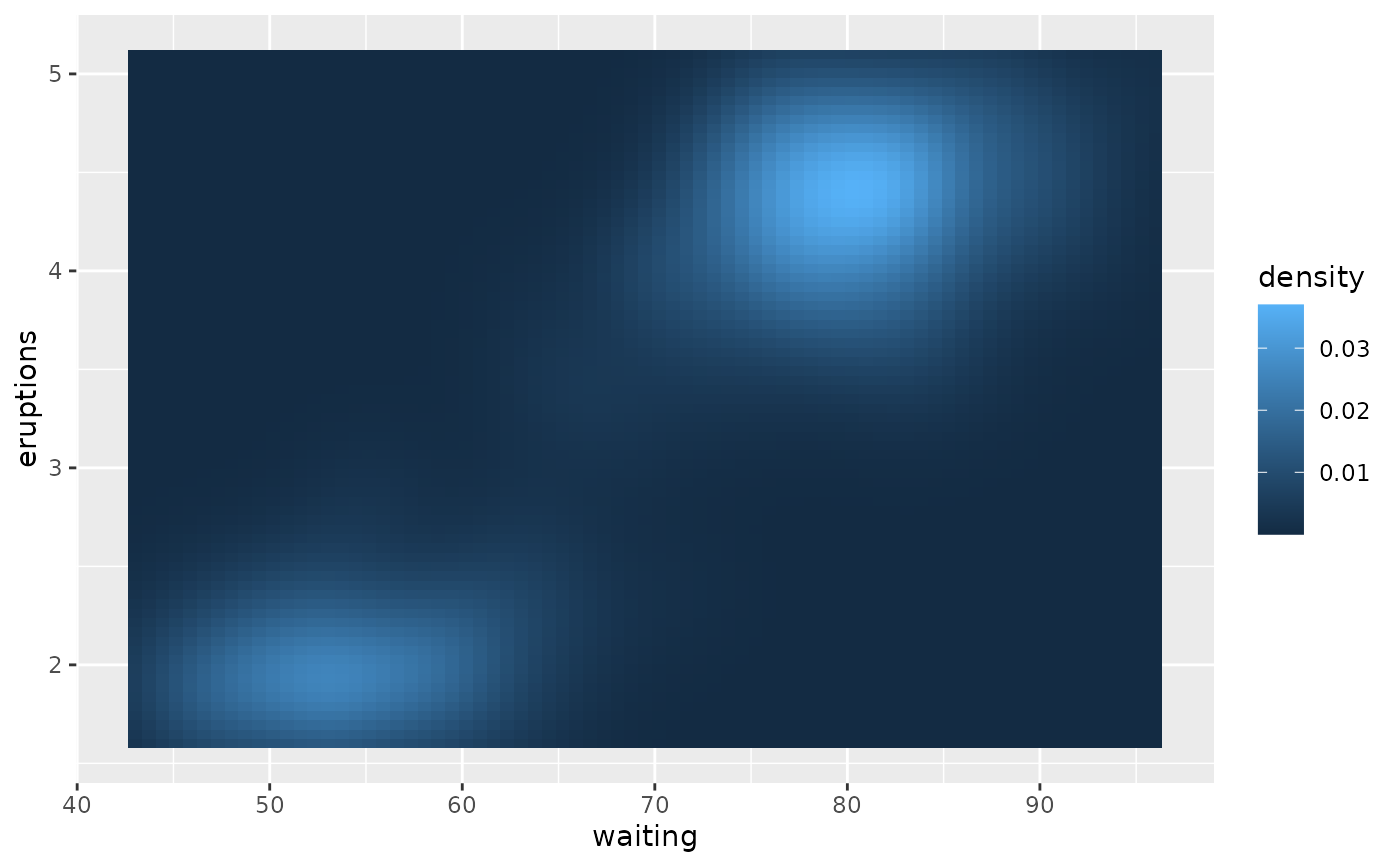 v + scale_fill_distiller()
v + scale_fill_distiller()
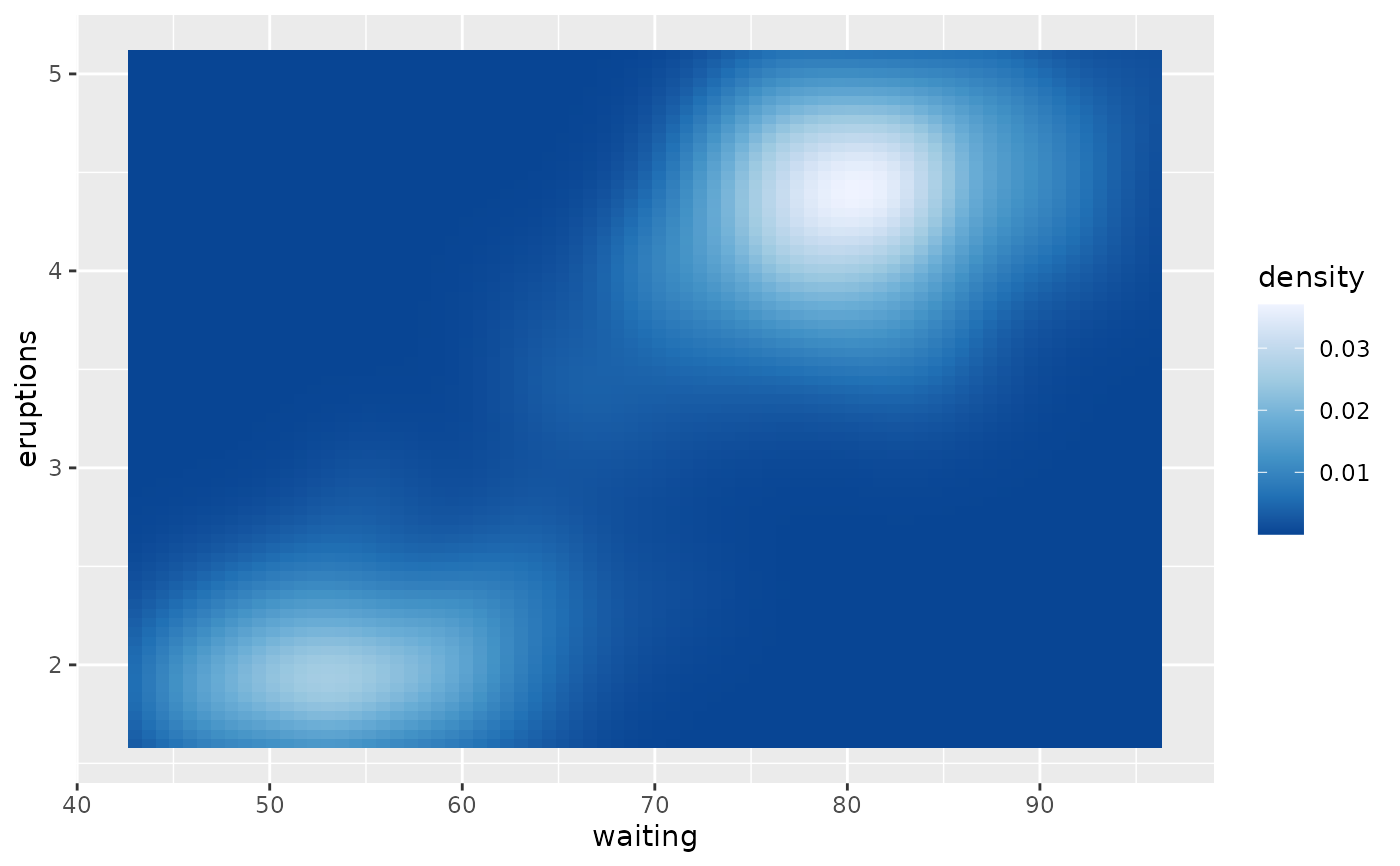 v + scale_fill_distiller(palette = "Spectral")
v + scale_fill_distiller(palette = "Spectral")
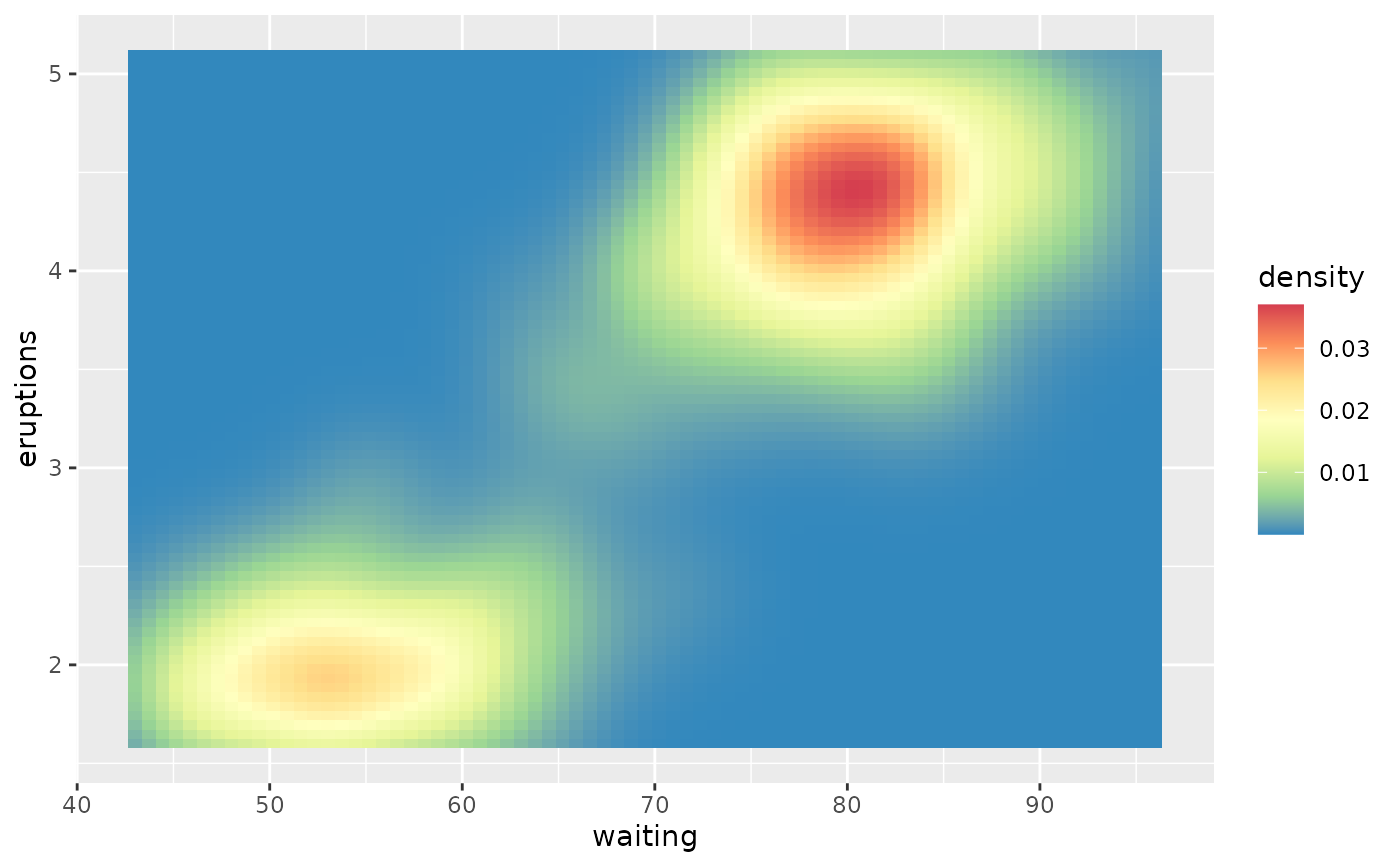 # the order of colour can be reversed, but with scale_*_distiller(),
# the default direction = -1, so to reverse, use direction = 1.
v + scale_fill_distiller(palette = "Spectral", direction = 1)
# the order of colour can be reversed, but with scale_*_distiller(),
# the default direction = -1, so to reverse, use direction = 1.
v + scale_fill_distiller(palette = "Spectral", direction = 1)
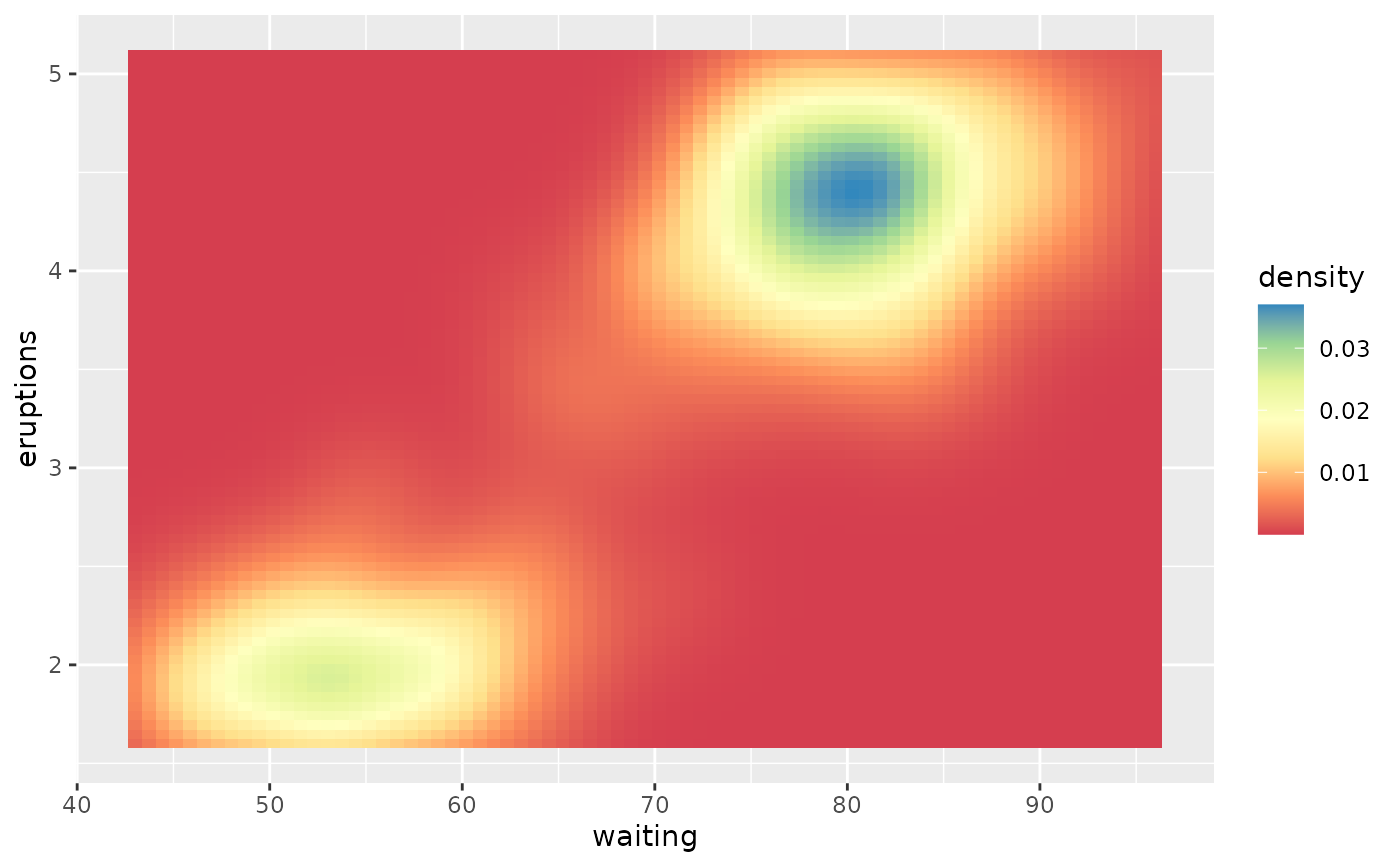 # or use blender variants to discretise continuous data
v + scale_fill_fermenter()
# or use blender variants to discretise continuous data
v + scale_fill_fermenter()
